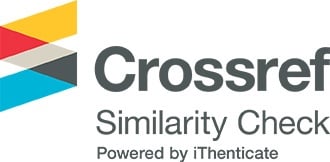Effective forecasting method for determining production demand: A case study
Các tác giả
DOI: https://doi.org/10.59294/HIUJS2025031Từ khóa:
forecasting, moving average, exponential smoothing, ARIMA, LSTM, time seriesTóm tắt
Forecasting has long been essential for improving enterprise performance, especially in inventory management, production planning, and overall economic efficiency. This study aims to predict production demand for a local stationery manufacturer with the aim of comparing and finding effective methods between three classical forecasting methods - Moving Average, Exponential Smoothing, and ARIMA - with a modern deep learning approach, Long Short-Term Memory (LSTM), to optimize production or inventory planning and management, and support enterprises in reducing waste and saving many expenses. Despite the ease of implement, the classical forecasting methods have difficulties in capturing and remembering economic trends, while machine learning gives more effective results in this circumstance. The data set includes quantities of demand and production collected and pre-processed by normalizing and stationarity testing. Classical methods are applied to capture the trends and variations in the data. At the same time, the LSTM is built to learn models with more complex patterns or some essential elements that traditional methods might overlook. The efficiency of the model is evaluated through forecasting errors such as Mean Squared Error (MSE), Root Mean Squared Error (RMSE), and Mean Absolute Percentage Error (MAPE). According to experimental results, classical methods provide a sustainable baseline. Still, the LSTM model shows high accuracy, especially in catching up with subtle fluctuations and unusual patterns in the dataset. It is ensured that using advanced deep learning techniques, such as LSTM, could improve forecasting error and reliability and significantly benefit manufacturing planning and inventory control. This study contributes to this field by providing a comprehensive comparative analysis of forecasting methods and practical insights for industrial companies to upgrade their capabilities in forecasting production demand effectively.
Abstract
Forecasting has long been essential for improving enterprise performance, especially in inventory management, production planning, and overall economic efficiency. This study aims to predict production demand for a local stationery manufacturer with the aim of comparing and finding effective methods between three classical forecasting methods - Moving Average, Exponential Smoothing, and ARIMA - with a modern deep learning approach, Long Short-Term Memory (LSTM), to optimize production or inventory planning and management, and support enterprises in reducing waste and saving many expenses. Despite the ease of implement, the classical forecasting methods have difficulties in capturing and remembering economic trends, while machine learning gives more effective results in this circumstance. The data set includes quantities of demand and production collected and pre-processed by normalizing and stationarity testing. Classical methods are applied to capture the trends and variations in the data. At the same time, the LSTM is built to learn models with more complex patterns or some essential elements that traditional methods might overlook. The efficiency of the model is evaluated through forecasting errors such as Mean Squared Error (MSE), Root Mean Squared Error (RMSE), and Mean Absolute Percentage Error (MAPE). According to experimental results, classical methods provide a sustainable baseline. Still, the LSTM model shows high accuracy, especially in catching up with subtle fluctuations and unusual patterns in the dataset. It is ensured that using advanced deep learning techniques, such as LSTM, could improve forecasting error and reliability and significantly benefit manufacturing planning and inventory control. This study contributes to this field by providing a comprehensive comparative analysis of forecasting methods and practical insights for industrial companies to upgrade their capabilities in forecasting production demand effectively.
Tài liệu tham khảo
[1] M. S. Haque, M. S. Amin, and J. Miah, "Retail demand forecasting: a comparative study for multivariate time series," arXiv preprint arXiv:.11939, 2023.
DOI: https://doi.org/10.21203/rs.3.rs-3280263/v1[2] I. Sumitra, "Comparison of forecasting the number of outpatients visitors based on naïve method and exponential smoothing," in IOP Conference Series: Materials Science and Engineering, 2019, vol. 662, no. 4, p. 042002: IOP Publishing.
DOI: https://doi.org/10.1088/1757-899X/662/4/042002[3] E. Kahraman and O. Akay, "Comparison of exponential smoothing methods in forecasting global prices of main metals," Mineral Economics, vol. 36, no. 3, pp. 427-435, 2023.
DOI: https://doi.org/10.1007/s13563-022-00354-y[4] G. P. Zhang, "Time series forecasting using a hybrid ARIMA and neural network model," Neurocomputing, vol. 50, pp. 159-175, 2003.
DOI: https://doi.org/10.1016/S0925-2312(01)00702-0[5] E. Munarsih and I. Saluza, "Comparison of exponential smoothing method and autoregressive integrated moving average (ARIMA) method in predicting dengue fever cases in the city of Palembang," in Journal of Physics: conference series, 2020, vol. 1521, no. 3, p. 032100: IOP Publishing.
DOI: https://doi.org/10.1088/1742-6596/1521/3/032100[6] E. Chodakowska, J. Nazarko, Ł. Nazarko, H. S. Rabayah, R. M. Abendeh, and R. Alawneh, "ARIMA models in solar radiation forecasting in different geographic locations," Energies, vol. 16, no. 13, p. 5029, 2023.
DOI: https://doi.org/10.3390/en16135029[7] J. E. Hanke and D. W. Wichern, Business forecasting. Pearson Educación, 2005.
[8] S. Hochreiter and J. Schmidhuber, "Long short-term memory," Neural computation, vol. 9, no. 8, pp. 1735-1780, 1997.
DOI: https://doi.org/10.1162/neco.1997.9.8.1735Tải xuống
Tải xuống: 75











